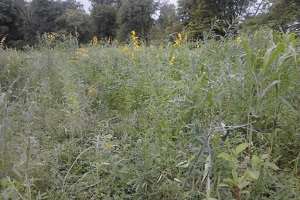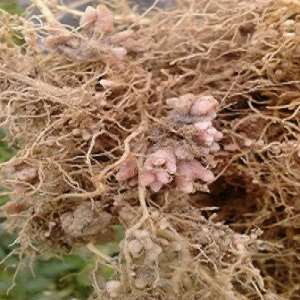By Clifton Martin
Our agricultural endeavors usually require that we give heed to convention and tradition while sprinkling in some improvisation and creativity to achieve our goals. Early this fall I walked a field that was a mixed planting of sorghum sudangrass, brown top millet, sunn hemp, crimson clover, and just a dash of soybean. Before this crop, this was a poorly performing grain field and the producer had a need for space to graze livestock, he required space to spread manure, and he was driven to seek innovative ways to boost soil quality. A biological system that integrated the producer’s needs and kept the soil covered and nutrients onsite was this producer’s approach to address his newly acquired underperforming acreage. This is an example of intercropping which seeks to capitalize on the benefits of increased plant diversity and increased complexity of a crop rotation. It is a work in progress but with a little homework and effort this producer is working on an approach that keeps his soil condition a top priority and meets multiple goals for his production.

The sorghum sudangrass and sunn hemp dominated the view. Of the plants in the field sorghum is more common and well-known, but the plant that caught my attention was sunn hemp (Crotalaria sp.). This is an upright summer legume that is 3-9 feet tall. As a legume, it fixes nitrogen from the atmosphere and produces large nodules. My encounter with it was in September at head high, or 5-6 feet. It is a rapid grower—this field was planted June 24—with smooth leaves, yellow flowers, and an extensive tap root. Seeds are small at 15,000 per pound. The ability of the plant to grow tall allows it to reach sunlight and grow with the sorghum grasses, which, makes it an attractive candidate for this intercropping system.
In our central Ohio climate, the expectation is that the plant will be frost-killed before full plant maturity and it is treated like an annual. The Midwest Cover Crops Field Guide states it is a fine crop for goat and sheep but less suitable for cattle. However, in an intercropping system there are other plants available. Harmful alkaloids can be present in the seed so grazing should cease after flowering. Recent research from New York published in Crop Science (2016) compared monocultures and mixtures of pearl millet, sorghum sudan, sunn hemp and cowpea. Yields of intercrop mixtures were stable across multiple environments but one clear lesson was shorter stature plants like cowpea did not pair well with taller and faster growing plants like sorghum sudangrass.

Interest in the US in sunn hemp is largely centered on cover cropping, green manures, intercropping and organic nitrogen sources. It has other utility in places such as India and Pakistan where it is used in fiber production. For those who are considering the use of warm season annuals to supplement forage needs, intercrop mixtures with sunn hemp may present an opportunity. To be clear, this is not an argument for converting out of your standard practices but, rather, a general encouragement to consider a wide array of options when trying to address unsatisfactory situations. This is new and has yet to go through the refining fire of time for our region. For most, staple forages such as orchard grass, fescue, and clovers are adequate to meet grazing needs.
So, to conclude, is this something you should try? The driving factors at the field in Ohio that made this possible included marginal field conditions and very little risk at an economic loss combined with a little bit of youthful optimism and adventure. As you wrap up your fall harvests, consider your options for next year and don’t be afraid to think outside the box.
Source: osu.edu